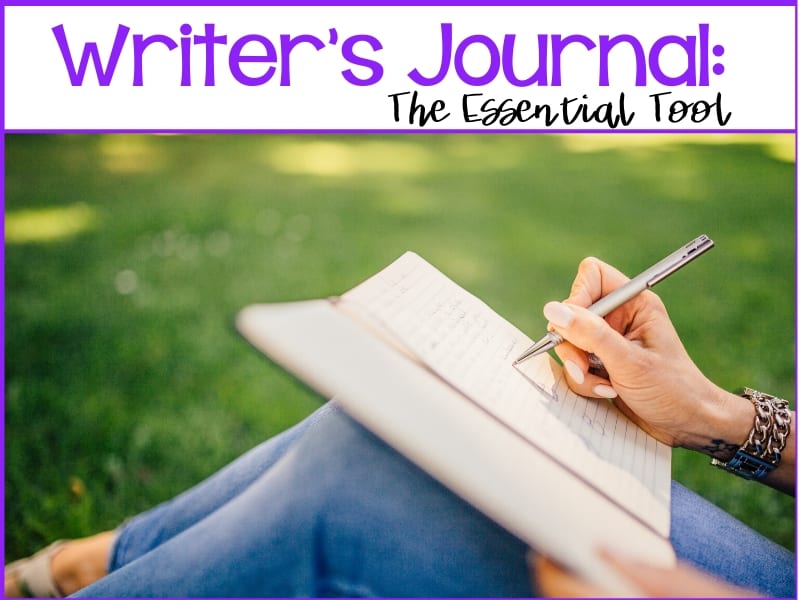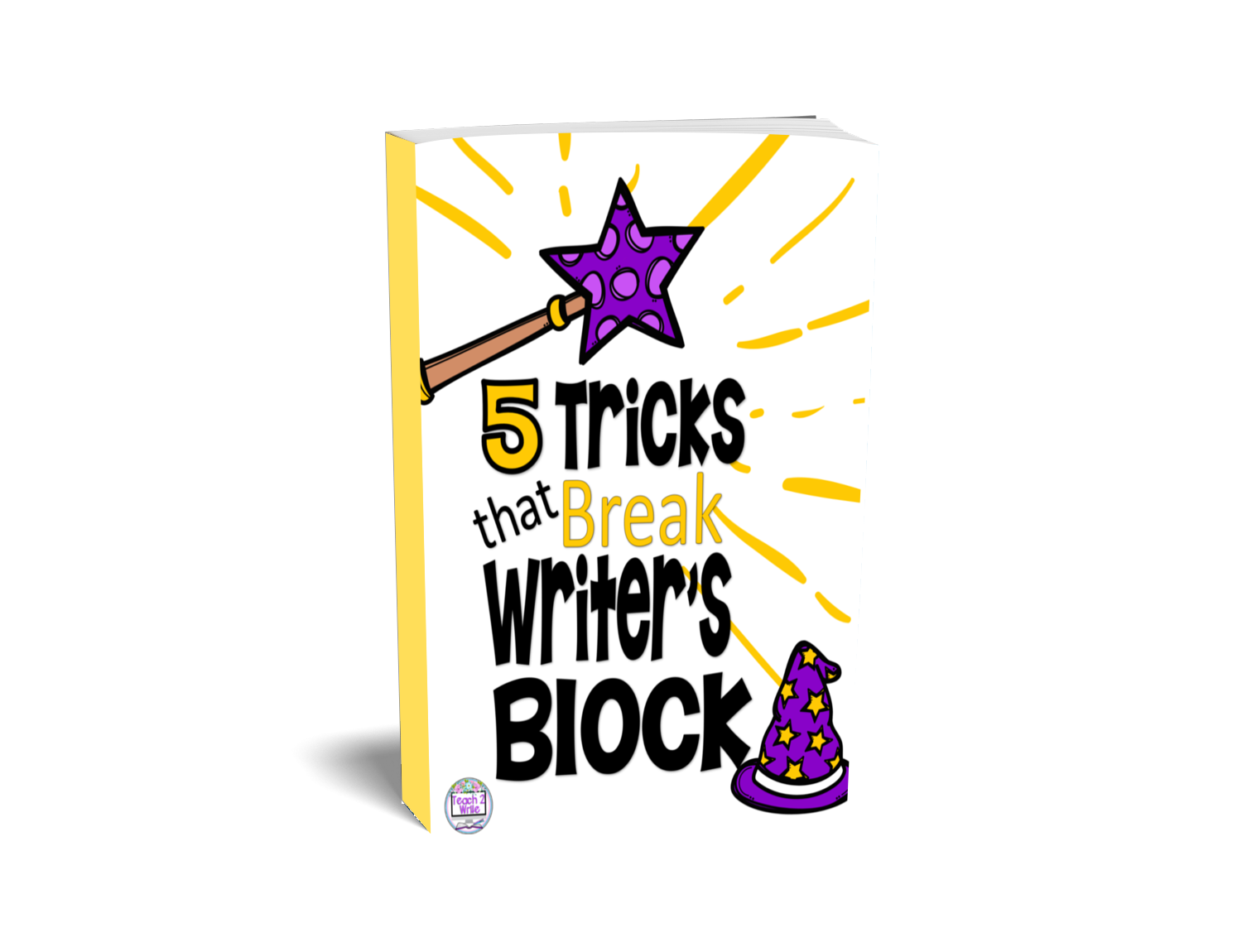Writer’s journals are essential tools for writers, and thus writing teachers and their students. I created both this podcast and blog post to convince you why the ancient technology of writing on paper is essential to being a more thoughtful and productive writer.
To listen to my podcast: The Write Idea, click on the player below.
Why use a writer’s journal when we have computers?
I am one to one in my classroom, meaning one student per computer. Even if my laptops are old, I know I am incredibly lucky to have this, and they need a lot of babying to keep them going.
(I have to plug them in at lunchtime so my afternoon students have battery life. Also, if there is a sub, I have to HOPE that my 6th period students remembered to plug in the computers at the end of the day.)
However, my students use writing journals every day.
Actually, it’s for a scientific reason! Yes, scientific research and technology has proven that handwriting certain information is essential for our brains to be creative.

Brain Research and handwriting (in writer’s journals):
First of all, in 2012 German scientists found that several areas of the brain are activated when writing creatively vs. copying notes. You can read that article here: How Handwriting Trains the Brain – The Wall Street Journal by Gwendolyn Bounds, Oct 5 2010
According to a study by Karin H. James and Laura Engelhardt, entitled: The effects on handwriting experience on functional brain development in pre-literate children Dec. 2012, young children learn to encode language through handwriting and become better readers.
Older children also benefit from handwriting by learning cursive. Children might improve their spelling and composition. One study by “Virginia Berninger, a professor at the University of Washington, reported her study of children in grades two, four and six that revealed they wrote more words, faster, and expressed more ideas when writing essays by hand versus with a keyboard,” according to Psychology Today.
Furthermore, middle schoolers and teens learn typing skills and use a hybrid of both typing on a keyboard as well as writing in longhand.
Here are the other articles I also referenced in the podcast:
- Three Ways that Handwriting with a Pen Positively Affects Your Brain by Nancy Olson Forbes May 15, 2016
- Your Brain on Writing by Institute for Writers August 17, 2017 – I shared this one with my students and we discussed it

Using a Writer’s Journal as a professional writer
The more I use my journals ( I have different journals for different writing purposes) the more productive I am versus just typing everything out on the computer. Before I used a writer’s journal, all of my writing was a hodgepodge of files and piles of papers stuffed into a file cabinet. Yet, when I began using a writer’s journal as a way to curate ideas, I began to finish writing pieces. In fact, that’s how I wrote and published two novels and three collections of short stories.
Here are my main reasons for journal writing:
- Less distractions from social media
- Fewer false starts and less revision due to those false starts
- Reduces waste time because my writing time is precious
- Outlining my ideas before committing them to a document
Journals in my classroom – an experiment:
Last year, I didn’t have students take notes or brainstorm the first quarter in their notebooks. I wanted them to have more writing time. It was the first year to teach WRITING ONLY through my creative writing course. I made quite a few mistakes – like the writing only thing. One of those mistakes was not utilizing a writer’s journal. (The other was that writers NEED to read!)
My students spent more time trying to figure out what they were supposed to be doing, rather than actually writing! Even though I taught them during a mini-lesson before releasing them to computers, students often forgot what I’d just taught them. (See what I said above about the brain research).
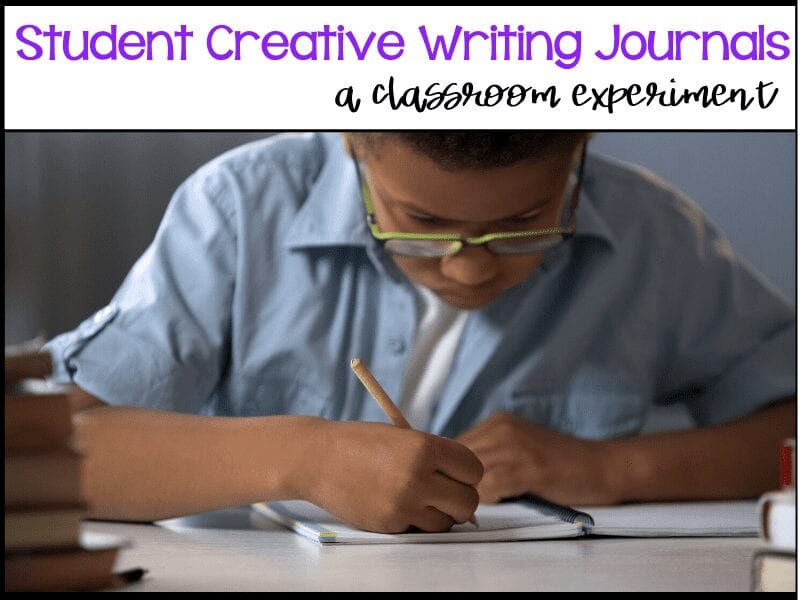
Furthermore, when they did get down to writing, they had lots of stops and starts. Most suffered from writer’s block. They spent a lot of time staring at a screen or looking for ideas online, which sent them down the rabbit hole of searching for, rather than expressing, ideas. So, assignments took 2 to 3 times longer than they should have!
By comparison, this school year all students have a writer’s journal. They are retaining more information from my mini-lessons. Due to their notes, brainstorming and first drafts from their freewrites, students are completing more assignments than last year’s students, with less down time due to writer’s block.
The takeaway here is: writing in a journal can help engage your mind more productively and creatively than just typing on a keyboard.

What we use our writer’s journals for:
We use our writer’s journals to practice writing strategies and techniques. Of course!
Practicing Strategies
The four strategies we practice, which are freely available to you, if you click here: Start Write Now Guide are:
- Mind Mapping: a free association of subtopics and details that radiate out of the central topic. If you need extra scaffolding with your students, you can get mind mapping worksheets from my Teacherspayteachers store here.These include questions that help students get to those details.
- Listing: this strategy is great for figuring out the possibilities. Possible topics, character traits, physical traits, setting locations, research questions, etc.
- Freewriting: writing without constraint for five-ten minutes. I use a more focused version of this strategy. Students freewrite after they have either listed or mind mapped. Then, they can use their free writes as a first draft, when they sit down in front of their computers.
- Sketching/Drawing: helps writers to visualize their thoughts. Writers can sketch out a favorite place, and then mark where they have significant memories of each special location on their maps.
Click on the image below to find out more about the Start Write Now Guide below:
Practicing Techniques
Additionally, we practice different techniques I introduce in mini-lessons, such as trying various points of view from either changing the perspective or the POV character narrating the story. Sometimes we try different thesis statements for essays or creative nonfiction articles and blog posts. Other times we focus on sensory details.
Writing in a writer’s journal is like an artist’s sketchbook or a baseball practice field. It’s where we learn, practice, and hone our craft. Likewise, it’s where we can be messy and disorganized to find out what we really want to express.
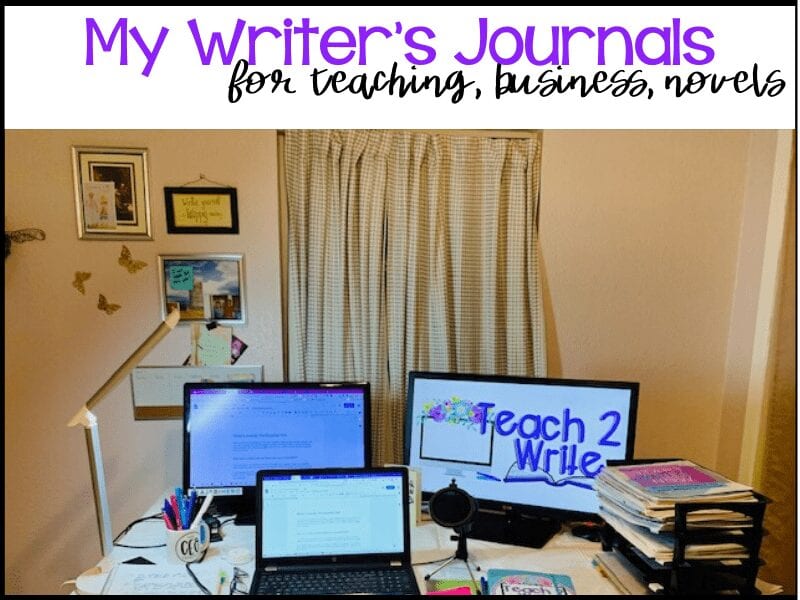
My Journals
My “teacher” writer’s journal lives in the top drawer of my teacher desk at school. It’s a beautiful little faux leather journal with a lavender cover and the words Once Upon a Time embossed in silver script on the cover. I refer to it often during my mini-lessons. I take pictures of it to project on the Apple TV to my students, so they can see that I practice what I preach.
At home, I have several different journals:
- mini-lesson planning
- latest novel project journal(s),
- Teach2Write business journal,
- business course journals
I keep all of these in a tray on my desk along with my content calendars and household budget/meal planning calendar. Without these essential tools, I would not be able to write the hundreds of thousands of words I write every year. Here are some of my favorite journals and pens:
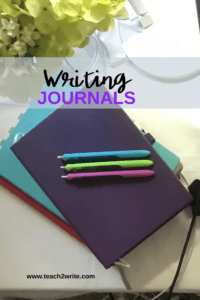
As you can see, if I couldn’t write down my ideas in a journal, I would be lost. My writer’s journal is a mess, do my computer docs don’t have to be. When I type BEFORE journaling, the quality of my ideas suffer, and it takes twice as long to write anything because I’m always revising, trying to find the right construction for my ideas. Above all, my writers journals keep all my writing projects in one place and keeps me more organized for writing.
Actionable Steps for your writer’s journal:
- Download freebie: 5 Tricks Guide to Break Writer’s Block
- Get a notebook that’s comfortable for you and start trying the strategies before you give it to your students.
- Write along with your students.
- How does it help you? What struggles are you having?
- Write daily -using a journal or writers journal it’s just like any other tool, consistency is key.
Music for the podcast came from: Come Inside by Snowflake (c) copyright 2019 Licensed under a Creative Commons Attribution (3.0) license. http://dig.ccmixter.org/files/snowflake/59564 Ft: Starfrosch, Jerry Spoon, Kara Square, spinningmerkaba
Hey Writing Teachers! This is for You!
Transform your Writers!
5 Tricks that Break Writer’s Block Resources
Teaching writing doesn’t have to be complicated or take hours of grading. In fact, teaching students these 5 writing tricks, helps cut wasted time from late work, revision and grading!
These resources are my TOP FIVE writing strategies that I use with my students nearly every day throughout the school year. These strategies give my students and I the proven results of higher quality writing, less late work and less revision.

